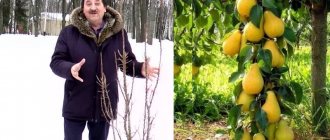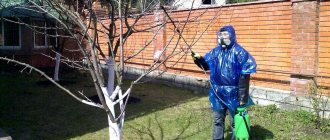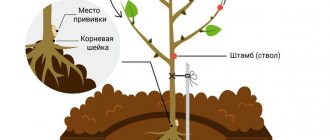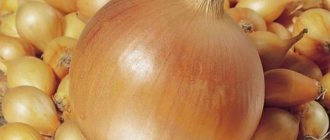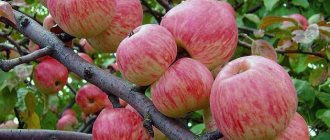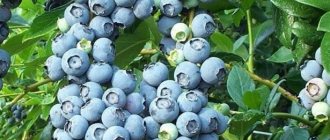Description of the variety
Rumba is an early variety of strawberry of Dutch selection, considered as an alternative to another popular early ripening variety - Honey for breeding in Germany and Scandinavia.
Bushes
Rumba bushes are spreading, powerful, heavily leafy. Large trifoliate leaves are dark green, with large teeth with stepped edges along the edges. During the flowering period, the bushes form long peduncles with large white flowers.
Berries
Rumba berries are large, have the shape of a regular (the first berries) or a rounded cone. The color of the fruit is dark red, even cherry, and the surface is shiny. The pulp is dense and juicy, scarlet in color with a pronounced smell of wild strawberries. The berries taste sweet, with barely noticeable sourness. The weight of the fruit reaches 30-35 g at the first harvest and 25-30 g in subsequent harvests.
Strawberries Rumba are perfect for fresh use, making jam and desserts. The berries do not lose their excellent taste even when frozen, which allows you to have fresh strawberries even in winter. Transportability is high, the berry is dense (about 20% denser than Fleur and Clery).
Productivity
Rumba strawberries are characterized by consistently high yields, which grow with good care. On a regular garden plot you can collect up to 500 g per bush (in the first year after planting 200-300 g), and when grown for commercial purposes - up to 1 kg. The berries begin to ripen several days later than the Clery and Fleur varieties, but the yield of Rumba is higher and comparable to the Honey variety.
History of selection and regions of cultivation of Rumba strawberries
The Rumba strawberry variety was bred by breeders of the Dutch holding “Fresh Forward” under the leadership of Bert Melenbroek. Scientists from Wageningen University and the Fragaria Holland association took part in the development. The holding registers all its varieties of berries under the names of famous dances. One of their latest berry selections, Salsa, has become a competitor to many of the leading strawberry varieties. The same fate is predicted for Rumba.
Scientists have developed a variety that can grow and develop in continental climates. In the middle zone and Scandinavian countries, strawberries are planted in open ground. Research and testing of berry ripening in greenhouses also showed positive results.
When growing strawberries indoors, it is necessary to observe the temperature regime so that the berries do not become soft from excessive heat.
Rumba strawberries are cultivated in the regions of Northern and Central Europe and Scandinavian countries. Strawberries are considered promising for the regions of Russia, Belarus and Ukraine. Ukraine has already included the variety in the register of plants recommended for cultivation in Polesie, steppe regions, and forest-steppe zones.
a brief description of
Rumba is an excellent high-yielding variety of strawberries, the fruits of which combine an attractive appearance with high taste.
Advantages of the variety
The plant has a lot of advantages, which is why its popularity among gardeners and large producers is growing. The main advantages include:
- early fruiting periods;
- high yield (a large number of large marketable berries are stably formed);
- attractive appearance (nice color, shine, ideal shape);
- the ability to maintain a presentable appearance for a long time (high transportability and keeping quality), which makes its cultivation for sale profitable;
- delicate taste and aroma that are not lost even after processing;
- resistance to many diseases and pests, primarily to gray and root rot;
- frost resistance.
Disadvantages of the variety
- when ripened in rainy weather it becomes watery and sour;
- very sensitive to the nutritional value of the soil; in the absence of fertilizing, productivity decreases;
- In dry summers it bears fruit poorly and the berries become smaller.
Pros and cons of the variety
Gardeners note the following advantages of the variety:
- the berries ripen early;
- Up to 400 g of berries are removed from each bush;
- the fruits are dense, juicy, and of the same size;
- the plant is frost resistant;
- does not require additional pollination;
- has immunity to certain types of diseases.
Among the disadvantages, agronomists highlight:
- special selection of soil;
- the plant requires special care, in particular, shelter for the winter;
- For a stable taste, the berry needs special climatic conditions, otherwise it becomes sour.
Landing
Rumba strawberries should be planted in a place protected from the wind and well lit by the sun. It is not recommended to plant bushes on the slopes of hills, hilly areas, and lowlands.
Rumba is picky about the soil; on poor soils, the taste and yield deteriorate significantly. The ideal option is chernozems, forest soils, loams with acidity pH = 5.2-5.5. It is important to pay attention to the proximity of groundwater (no closer than 0.8 m to the surface).
Strawberries take root well in beds where carrots, onions, dill, and any green manure previously grew.
Before planting seedlings, the soil is fertilized with humus (a bucket per m2). Since Rumba's bushes are spreading, they should not be planted too densely. Ideal planting pattern: 30 cm between seedlings in a row, 50-70 cm between rows. If planted more frequently, the berries will not receive enough sunlight and will be sour and small.
To a bucket of humus, which is added before planting, it is good to add 100 g of superphosphate and 120 g of potassium sulfate or 150-200 g of wood ash
The depth of the planting hole should be equal to the length of the root, but not exceed 10 cm. If the roots are very long, they are cut off. Before planting, the holes are watered, then the seedling is placed vertically, covered with earth and the soil is compacted so that there are no air cavities left.
The optimal row arrangement is from north to south.
Planting dates: spring or autumn when using purchased planting material (in summer only seedlings with a closed root system are used and most often their choice is poor, and the price is high), late July - early August when using your own seedlings (the mustaches will have time to develop before winter and will bear fruit well for the next season).
How to plant
Let's learn the basic rules for planting Rumba strawberries.
Boarding time
This variety can be placed in open ground both in spring and autumn. If you choose autumn, then the best period for planting will be mid-August to mid-September. Strawberries placed in the ground at this time will be able to take root successfully and will have time to get stronger before the cold weather begins. In spring, plant strawberries as early as the climate in your area allows. It may also be useful for you to learn about the remontant variety Albion, and how to grow it correctly.
Methods for planting strawberries.
It is better to plant in cloudy weather or in the evening. It is not recommended to work in the sun, since the rays can scorch tender seedlings, and they will wither before they have time to take root. But how the Darselect variety is planted, and what cultivation features exist, are described in this material.
Soil and site
For Rumba strawberries, it is important to choose a sunny place, well protected from the winds.
As for the soil, it must be fertile, saturated, mainly, with organic matter and humus. Loamy and sandy loam soils, as well as black soil and gray forest soil are best suited for growing strawberries of this variety. Rumba strawberries will feel worst if they are placed in dense clay soil: in this case, the chances of a good harvest are minimal.
In an area intended for growing Rumba, groundwater should lie at a distance no closer than 60-80 cm from the surface. It is best if herbs or grain crops were grown in this area before the strawberries.
It should be borne in mind that in one place Rumba grows well and bears fruit only for the first 3-4 years, and then it needs to be replanted.
Boarding procedure
It is necessary to prepare the bed in advance. To do this, dig up the ground and add 10 kg of humus, 100 g of superphosphate and 50 g of potassium salt per 1 m2 of soil. If there is no humus, it will be replaced by 5 kg of manure.
Immediately before planting, the seedlings should remain in a cool place for 3 days. This kind of stratification will harden the plants and make them more prepared for being outside.
Maintain a distance between holes of 30 cm, and between rows - 25-30 cm. In this case, the depth of the hole should be sufficient: the roots should be freely placed in a straightened state. You will also be interested to learn about how the Tsaritsa variety is planted.
In the video - planting strawberries in the ground:
Before planting, trim off the existing leaves of the bushes, leaving only the top 3-4. Make sure that the necks of the plants are level with the ground.
Experienced gardeners recommend planting Rumba as follows: pour water into the hole, then lower the roots into the water, and slowly cover it with soil. This way the roots will naturally straighten out.
If you plant strawberries in the spring and there is a danger of return frosts, it is recommended to cover the bushes with film after planting.
Growing and care
Watering
The frequency and abundance of watering Rumba strawberries depend on weather conditions and the degree of dryness of the soil. In hot, dry weather, strawberries are watered every 3-4 days, spending 15-20 liters. water per m2. It is especially important to ensure regular watering during flowering and berry setting. The optimal time of day is early morning, when the sun is not yet at its zenith. Before color appears, the plants are watered using a watering can, while washing away dust from the leaves. During the flowering and fruiting period, water is carefully poured under the root, avoiding contact with flowers and fruits.
Loosening, weed control
Weeds take away nutrients, shade the bushes, depriving them of sunlight and heat. Weed control is one of the most important conditions for obtaining a good harvest.
Buckwheat inhibits the growth of weeds, so it is good to plant it on the site the season before strawberries.
Mulching will help make loosening and weeding easier. Straw, leaf litter, and sawdust are used as mulch. Over time, the mulch begins to rot and becomes a source of nutrients. Rumba is demanding on soil nutrition, and fresh mulch binds soil nitrogen. To prevent nitrogen starvation, it is necessary to water the mulch with a solution of mullein (1:10), chicken droppings (1:20), and herbal infusion (1:3).
Removing a mustache
The tendrils that form on the shoots take away nutrients from the mother plant, therefore, to obtain maximum yields, they should be removed immediately.
If you need to get rosettes for propagation, then it is better to leave a few plants only for propagation and obtaining tendrils. The flower stalks of these bushes are cut off, as a result, all the strength of the plant goes to the formation of mustaches. From one mother plant you can get 10-30 rosettes.
Feeding
Proper feeding of Rumba is a key condition for obtaining a high yield of quality berries. Lack of nutrients leads to seedlings weakening and berries losing their taste.
Particular attention should be paid to providing the plant with minerals. Potassium has a great influence on the quality of berries. It is a sufficient amount of this element that makes their flesh dense and sweet. Potassium fertilizers should be applied three times:
- at the beginning of flowering;
- during berry setting;
- during fruit ripening.
Feeding scheme to improve taste: potassium sulfate at the root, calcium sulfate + potassium humate at the leaf.
Supporters of using only organic fertilizers can feed strawberries according to the following scheme: in the spring, a bucket of humus to replenish the plant’s need for nitrogen, a glass of ash a couple of times a season, as a source of phosphorus and potassium. The calculation is based on 1m2 of area.
Pest and disease control
The main pests of strawberries are spider mites, raspberry weevils, and whiteflies. These small insects attack the leaves and stems of the plant, preventing the plant from growing and can lead to death.
| Pest | Signs | How to fight |
| Spider mite | Plants are stunted. Leaves lighten and dry out, new ones do not form | Treatment after picking berries with preparations: karbofos, neoron, omaite, fitoverm. Treatment of bushes with hot water (80-85 g.) |
| Nematode | The leaves darken and growth stops. Peduncles and buds become deformed, thicken, and shorten. Petioles and whiskers turn red | Removing affected bushes |
| Raspberry-strawberry weevil | Damage to leaves and peduncles | Treatment in spring with preparations: Aktelik, Aktara, mulching with spruce or pine needles |
The basic rule for processing plants is that this should be done before flowering or after harvesting. In addition to the use of chemicals, preventive measures are used such as:
- autumn deep loosening of the berry garden;
- removal of dry and pest-infected leaves;
- destruction of diseased plants;
- regulation of soil moisture.
Rumba strawberries are resistant to diseases such as powdery mildew or brown spot, and in rare cases they are affected by gray rot. The disease manifests itself in the form of brown spots with a gray coating on the leaves and fruits of the plant. To eliminate the problem, it is necessary to collect berries in a timely manner, clear the area of weeds, and, if possible, cover the beds with polyethylene when long rainy periods occur. Spring spraying of bushes with Azocene also helps.
Preparing for winter
How strawberries overwinter determines their quality and yield for the next year. Preparing the plant for wintering begins immediately after fruiting ends. Bushes without berries also require care. It is necessary to carry out watering and fertilizing (with a lower nitrogen content). In areas with little snow, Rumba is covered with spruce branches or non-woven material.
Proper care of garden strawberries
The basis of all care is fertilizing and watering. Let's talk in more detail about each of these agrotechnical procedures.
Watering
The variety is not highly drought-resistant, so during hot weather it is very important not to skip watering. Usually, garden strawberries are watered once a week, taking into account the fact that there is no drought. During drought, the number of waterings is increased to 2-3 per week (depending on its intensity). When watering, you also need to follow a number of fairly simple rules:
- Water strawberries in the morning or evening, when the sun is in its inactive phase. If you water strawberries during hot weather, there is a risk of burning the green mass of the strawberries.
- You need to water the bushes strictly at the root. Ideally, use a drip irrigation system.
- It is strictly prohibited to water Rumba with cold water from a well. The water should be settled and warm.
- Approximate water consumption per 1 m2 is 10 l.
We also recommend reading: Description of the Cabrillo strawberry variety
After each watering, experienced gardeners recommend loosening the soil. It will not only get rid of the crust that forms during frequent watering, but also improve oxygen access to the root system, as well as get rid of weeds growing near the crop.
Feeding
Rumba is a rather demanding variety in terms of fertilizing. It will not be possible to get a good harvest on unfertilized soil. Therefore, feeding must be approached with all responsibility. During the growing season, Rumba garden strawberries are fertilized three times:
- The first time is in early spring, immediately after the plant awakens from winter sleep. At this stage, he really needs nitrogen-containing fertilizers. They are able to stimulate the growth of green mass, which is very important at the initial stage of crop development.
- The strawberries are fertilized a second time after the ovaries have formed. At this stage, the plant greatly needs phosphorus-potassium supplements.
- The last time to fertilize strawberries is in the fall, after harvesting. The last feeding is aimed at providing the plant with the necessary nutrients for normal wintering. The third time they feed the strawberries with organic matter.
Reproduction
The simplest and easiest way to propagate Rumba is considered to be propagation by mustache. These are side shoots that then take root and separate from the mother plant. Advantages of this option:
- the ability to get many young bushes from one plant;
- preservation of varietal properties;
- new plants take root well.
Strawberries are propagated by dividing the bush. To do this, select the strongest plants and divide them into horns. Healthy three-year-old plants with a developed root system are suitable for this method. However, the survival rate of horns is significantly lower than when using mustaches.
Harvesting and storage
Strawberries are harvested every morning after the dew has dried. If left on the bush, it can quickly become overripe. The berries intended for storage are collected with the stalk. When processing a large area, to make the work easier, you can immediately sort the strawberries into different containers.
To ensure that the berries are well preserved for several days, lay them in no more than 2-3 layers. If it is intended to be frozen, it must be placed in the freezer on the same day. First, the strawberries are frozen in one layer, then poured into a bag in which they are stored and used as needed throughout the winter.
Reviews
I sell surplus berries at the market. "Rumba" is an ideal option for sale. The berries are all even, beautiful cherry color, sweet, transportable, and juicy. I’m glad that the variety is resistant to pests and diseases; I don’t even suffer from gray rot, although in Asia, for example, rot affects part of my harvest every year. As for fertilizing, I only use the organic-mineral complex from the Buysky plant, I don’t know whether it’s good or not, but lately I haven’t had enough money for manure.
Strawberry Rumba is a wonderful variety that, with good care, gives a high yield. The excellent taste of the berries and high safety during transportation have made its commercial use popular.
Disease and pest control
The advantage of the Rumba variety is its high immunity to disease. The only problem that may arise is the appearance of gray rot from high humidity. To prevent the disease, carry out two treatments with the Alirin-B fungicide with a break of 7 days. For spraying, dissolve 1 tablet of concentrate in 1 liter of water.
Pests are also not scary. As a precautionary measure, preventive treatments with Actellik or Aktara insecticides are recommended according to the instructions. In most cases, correct agricultural technology is sufficient for prevention.
Advantages and disadvantages
The main advantages of Rumba include:
- the clusters are large in size and beautiful in appearance;
- berries are medium and large in size, not prone to peas;
- the skin of the fruit is compacted, so the berries are practically not damaged by pests and tolerate transportation well at any distance;
- the first clusters on the grapevines appear 2-3 years after planting seedlings or cuttings;
- this subspecies combines well with rootstocks;
- early ripening of the crop - ripe bunches can be collected from the last ten days of July;
- good resistance to frost - the bushes can withstand cold temperatures down to -18-20ºС;
- berries are not susceptible to sunburn;
- Fruiting is stable, annual;
- cuttings and seedlings quickly take root; thanks to their good resistance to frost, they can be planted in a permanent place not only in spring, but also in autumn;
Cuttings and seedlings of Rumba grapes take root very well and quickly
- high resistance to major fungal diseases, including mildew and oidium;
- When fully ripe, the brushes can hang on the bushes for up to several weeks without falling off, losing their taste or bursting.
This grape has no particular disadvantages.
It must be borne in mind that this subspecies is an amateur form and has not yet been included in the Russian State Register of Agricultural Achievements.
Fertilizer application
The Rumba variety responds well to fertilizing. This positive quality plays a bad joke when the gardener adds excess nitrogen. Increased doses of the microelement provoke thickening of the stems and leaves of Rumba strawberries, to the detriment of fruit formation.
Video: Strawberries of the rumba variety on April 15, 2022
Video: Garden strawberries Rumba. Review.
Preference is given to organic matter. Its action is extended over time. It helps improve soil structure. To do this, take last year's manure and lay the soil around each strawberry bush in the spring, before the inflorescences begin to lay.
Fresh manure cannot be used - it is a source of pathogenic microorganisms. It also contains nitrogen compounds in such a concentration that leads to burns of the root system.
It is permissible to use mineral fertilizers to adjust the content of nitrogen, phosphorus and potassium in the soil.
Appearance of berries
The difference between Rumba strawberries is their correct shape: there are practically no defects in them in the form of swelling, cavities, doubling of berries, etc. The shape is classic, almost conical. The color is pleasant: red in the stage of incomplete ripening and close to cherry for overripe berries. The berries, when ripe enough, are dark red with a strong shine. There are many seeds, they are small, light yellow, and do not protrude above the surface of the berry.
The main advantage of the variety is the ideal presentation of the berries
Useful properties and applications
The fruits of the rumba grape are characterized by a high content of vitamins B and C, microelements (iron, zinc, potassium, manganese) and organic acids.
| Benefits of grapes | ||
| For men | For women | For children |
| Supports normal sexual function | Normalizes hormonal levels | Has antiviral, antibacterial and anti-cold effects |
| Helps activate metabolic processes, which improves the delivery of nutrients to organs through the bloodstream | Reduces exposure to UV radiation on the body | Helps increase appetite and stimulate brain activity |
| Improves the quality of seminal fluid and increases the number of viable sperm | Helps prevent clogged blood vessels, varicose veins and cholesterol deposits | Ensures normal functioning of the cardiovascular system |
| Helps cleanse and normalize liver and kidney function | Improves psycho-emotional state | Prevents the development of anemia |
The berries are suitable for fresh consumption, as well as for processing and making juices, compotes, preserves, jams, as well as homemade wines and spirits.
Comparison with analogues
“Rumba” is a promising grape variety, the combination of positive characteristics of which allows it to compete with other early varieties that have already proven themselves.
| Sign | Variety | ||||
| Rumba | Agate Donskoy | Sofia | Pink haze | Rusven | |
| Ripening period | 95-102 days | 115-120 days | 100-115 days | 115-120 days | 110-115 days |
| Frost resistance | Up to -25 °C | Up to -26 °C | Up to -21 °C | Up to -23 °C | -25…-27 °C |
| Yield per bush | 60 kg | Up to 50 kg | 50-70 kg | About 6 kg | 13-16 t/ha |
| Bunches | From 800 g to 1.2 kg | 400-600 g | From 800 g to 1.2 kg | 700-800 g | 350-500 g |
| Taste | With cherry flavor and light nutmeg aroma | Simple, without aftertaste or aftertaste | With a nutmeg aftertaste | Harmonious | Pronounced nutmeg aroma |
| Color | Amber-pink to violet-red with a golden tint | Dark blue or violet red | Light pink | White-pink | Green-pink |
| Disease resistance | High | High | Average | High | Average |
| Shelf life | Up to 6 months | 2-3 weeks | 3-5 weeks | A few months | A few months |
| Sugar content | 20-23% | 13-15% | 20% | 16,8-18,5% | About 20% |
| Acidity | 5-7 g/l | 6-7 g/l | No information | 7 g/l | 7-9 g/l |
Characteristics of the vine of the hybrid form “Rumba”:
The sleeves of this variety have a colossal growth force and stretch to a length of up to six meters or more during the season. The leaf is medium in size, five-pointed, dark-colored, carved along the edge, with pronounced tiles.
The vines have time to ripen very well during the season. The percentage of vine ripening is more than 80%.
Bushes of this variety are usually planted at a distance of 2.5 meters between rows and 3-4 meters are left between plants. A feature of the form is its tendency to thicken with shoots. For this reason, short and medium pruning is carried out on Rumba vines. The optimal number of fruit buds is 50-60 per plant.
Also in the agricultural technology of the variety, rationing of shoots and bunches plays an important role. During spring work, approximately 16-18 fruit shoots are left for each adult bush. When forming on a two-strip trellis, this amount doubles. Plants overloaded with clusters cope with the harvest, but outwardly such clusters are smaller and the berries in them are smaller. The ripening time for grapes on such bushes is longer.


